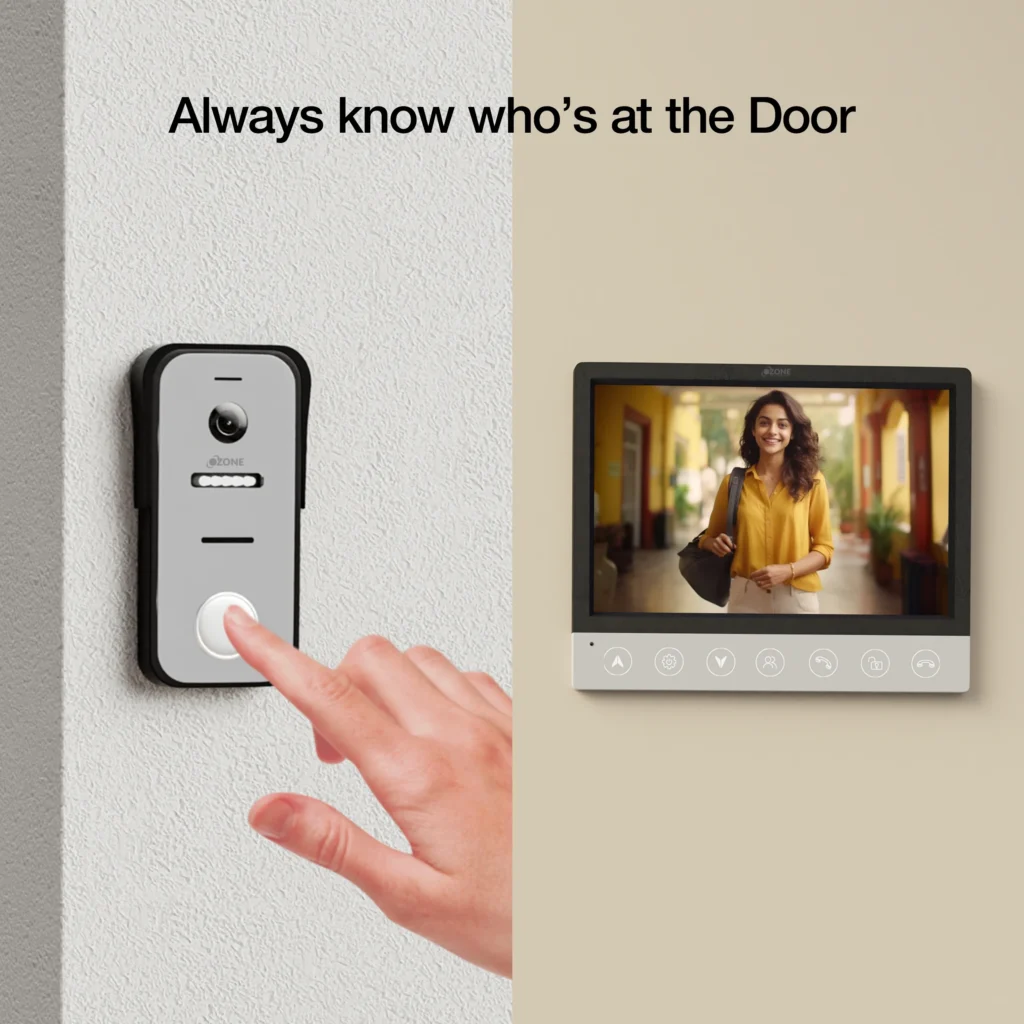
Video Door Phones Explained: Features, Benefits & How to Choose
Ding dong! Who’s at the door? In today’s world, where safety is paramount, wouldn’t it be great to know exactly who’s knocking before you even open up? Enter the video door phone – your digital doorman and security guard rolled into one sleek device.
Gone are the days of peeping through tiny peepholes or blindly opening doors to strangers. With a video door phone, you can see, hear, and even speak to your visitors from the comfort of your couch or while you’re miles away from home. But with so many options flooding the market, from traditional systems to cutting-edge IP video intercoms, how do you choose the right one for your needs?
In this comprehensive guide, we’ll unlock the secrets of video door phones. We’ll explore their benefits, key features to look for, and help you navigate the choice between traditional systems and modern IP alternatives. Whether you’re a tech-savvy homeowner or a property manager looking to upgrade your building’s security, we’ve got you covered. So, let’s ring in a new era of home security and convenience!
Understanding Video Door Phones
A. Definition and basic functionality
A video door phone, also known as a video intercom system, is an advanced communication device that enables audiovisual interaction between occupants and visitors at a building’s entrance. This system allows tenants to see and speak with visitors before granting access, enhancing security and convenience.
The basic functionality of a video door phone includes:
Two-way audio communication
Video feed of the visitor
Remote door unlocking
B. Key components of a video door phone system
A typical video door phone system includes –
Outdoor station Indoor unit
Door release mechanism Component
Description Outdoor station
Located at the entrance, featuring a camera, microphone, speaker, and call buttons
Indoor unit
Monitor or smartphone app for tenants to view and communicate with visitors
Door release mechanism
Electronic lock that can be activated remotely by the tenant
C. Types of video door phone systems
There are three primary types of video door phone systems:
Wired systems Wireless systems
IP-based systems Wired systems
Traditional wired systems require physical connections between components, making installation more complex and costly. They are typically less flexible in terms of functionality and remote access.
Wireless systems
Wireless video door phones use Internet Protocol (IP) technology to enable remote access via smartphones. While more convenient than wired systems, they may lack some advanced features.
IP-based systems
Modern IP video intercom systems, such as ButterflyMX, offer the most advanced features and functionality. These systems provide:
High-quality audio and video Mobile app integration
Cloud-based access control Remote management capabilities
Integration with other smart home technologies
IP-based systems represent a significant upgrade over traditional door phones, offering improved security, convenience, and ease of use for both tenants and property managers.
Now that we have covered the fundamentals of video door phone systems, let’s explore the numerous benefits these devices offer to both residential and commercial properties.
Benefits of Video Door Phones
Now that we have covered the basics of video door phones, let’s explore the numerous benefits they offer to both residential and commercial users.
Enhanced security and visitor identification
Video door phones significantly enhance security by providing real-time video and audio monitoring at entry points. This feature allows users to visually confirm visitors before granting access, minimizing the risk of unauthorized entries. The clear footage captured by these systems can serve as crucial evidence in the event of a security breach or suspicious activity.
Security Feature – Benefit
Visual confirmation – Reduces unauthorized entry
Footage recording – Provides evidence for incidents
Deterrent effect – Discourages potential intruders
Remote communication and access control
One of the most significant advantages of modern video door phones is their ability to facilitate remote communication and access control. This functionality is particularly beneficial in the following ways:
Remote monitoring via smartphones, tablets, or computers
Generation of temporary access codes or QR codes
Integration with other security measures (e.g., door locks, security cameras)
After-hours assistance for visitors
These features enable users to manage access requests conveniently, even when they’re away from the premises. For instance, homeowners can communicate with delivery personnel remotely, ensuring secure handling of packages.
Convenience for tenants and property managers
Video door phones offer substantial convenience for both tenants and property managers:
Time-saving: Users can interact with visitors without physically going to the door
Efficient visitor management: Streamlined process for granting access to authorized individuals
Improved internal communication: Facilitates communication across various locations within a property
Cost-effective: Reduces the need for on-site security personnel in some scenarios
Additionally, the integration of video door phones with smart technology allows for seamless management through mobile applications, further enhancing user convenience.
With these benefits in mind, next, we’ll explore the essential features to look for when choosing a video door phone system. Understanding these key functionalities will help you make an informed decision that best suits your security and communication needs.
Features to Look for in Video Door Phones
Now that we’ve explored the benefits of video door phones, let’s delve into the essential features to look for when choosing one. These features can significantly enhance your home security and convenience.
Two-way audio and video capabilities
Two-way communication is a cornerstone feature of modern video door phones. This functionality allows you to:
See and hear visitors clearly
Interact with delivery personnel without opening the door
Deter potential intruders by simulating occupancy
High-definition video capture is crucial for clear visibility. Look for devices that offer:
Feature – Benefit
HD resolution – Crisp, detailed images
Zoom capabilities – Ability to focus on specific areas
Wide-angle lens – Broader view of the entrance area
Night vision and wide-angle cameras
To ensure round-the-clock security, consider these camera features:
Night vision: Essential for clear visibility in low-light conditions
Wide-angle cameras: Capture a broader area, reducing blind spots
HDR (High Dynamic Range): Improves image quality in varying light conditions
Smart home integration and mobile app support
Modern video door phones offer seamless integration with smart home ecosystems:
Mobile app support:
Receive real-time notifications on your smartphone
View live video feeds remotely
Interact with visitors from anywhere
Smart home compatibility:
Integration with voice assistants like Amazon Alexa
Compatibility with smart displays for convenient monitoring
Potential for integration with other security devices
When selecting a video door phone, consider the following:
Compatibility with existing smart home devices
User-friendly mobile app interface
Customizable alert settings to reduce false notifications
By focusing on these key features, you can choose a video door phone that offers enhanced security, convenience, and integration with your smart home ecosystem. With this in mind, next, we’ll explore the differences between traditional video door phones and IP video intercoms to help you make an informed decision for your home security needs.
